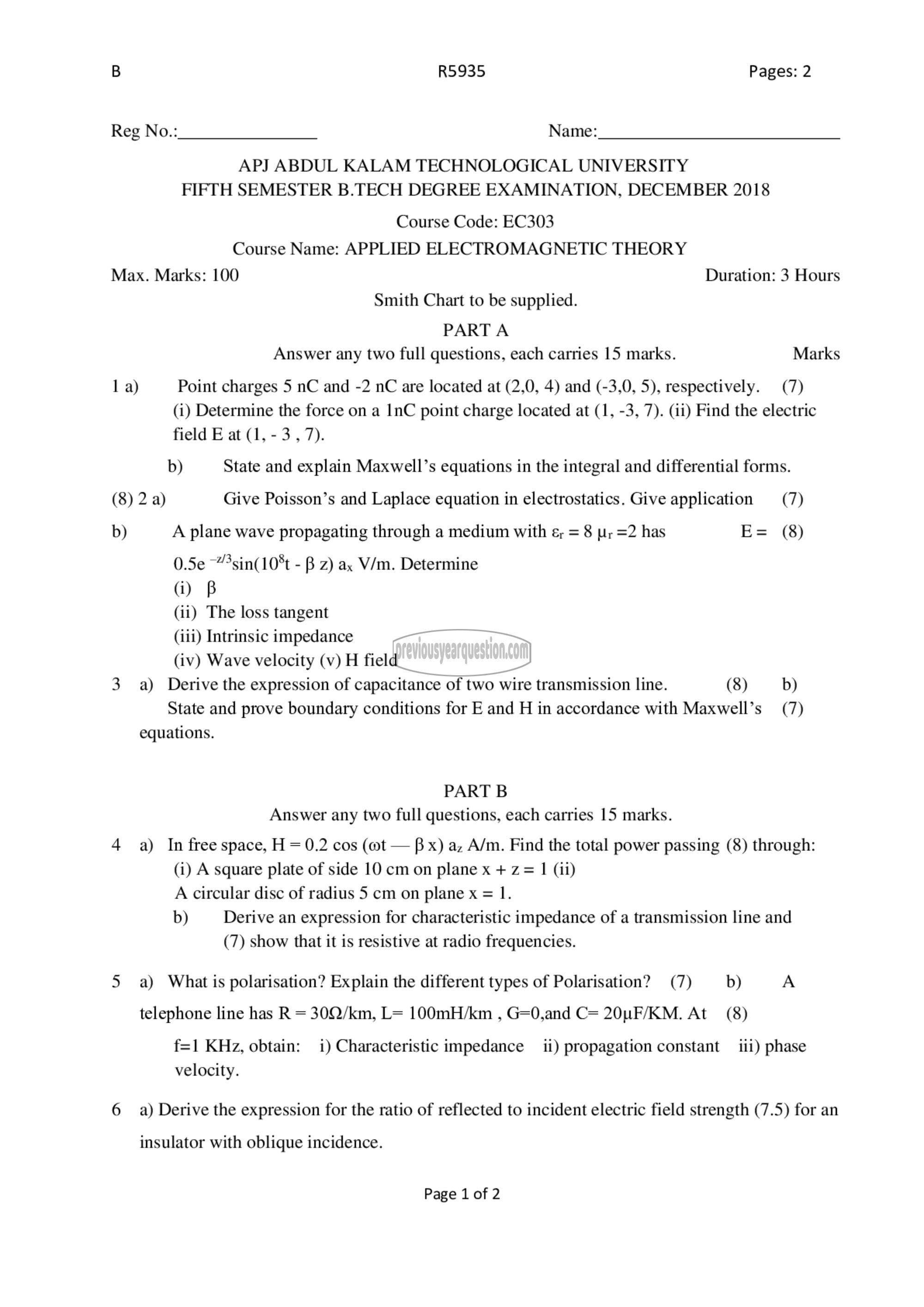APJ ABDUL KALAM TECHNOLOGICAL UNIVERSITY Previous Years Question Paper & Answer
Semester : SEMESTER 5
Subject : Applied Electromagnetic Theory
Year : 2018
Term : DECEMBER
Scheme : 2015 Full Time
Course Code : EC 303
Page:1
B R5935 Pages: 2
Reg No.: Name:
APJ ABDUL KALAM TECHNOLOGICAL UNIVERSITY
FIFTH SEMESTER B.TECH DEGREE EXAMINATION, DECEMBER 2018
Course Code: EC303
Course Name: APPLIED ELECTROMAGNETIC THEORY
Max. Marks: 100 Duration: 3 Hours
Smith Chart to be supplied.
PART A
Answer any two full questions, each carries 15 marks. Marks
1 a) Point charges 5 nC and -2 nC are located at (2,0, 4) and (-3,0, 5), respectively. (7)
(i) Determine the force on a InC point charge located at (1, -3, 7). (ii) Find the electric
field E at (1, - 3 , 7).
b) State and explain Maxwell’s equations in the integral and differential forms.
(8) 2 a) Give Poisson’s and Laplace equation in electrostatics. Give application (7)
b) A plane wave propagating through a medium with بی 8 = مع =2 has E= (8)
0.5൦ ~sin(10%t - B 2) ax V/m. Determine
(i) B
(ii) The loss tangent
(iii) Intrinsic impedance
(iv) Wave velocity (v) H field
3 a) Derive the expression of capacitance of two wire transmission line. (8) b)
State and prove boundary conditions for E and H in accordance with Maxwell’s (7)
equations.
PART B
Answer any two full questions, each carries 15 marks.
4 a) In free space, H = 0.2 cos (mt — م x) az A/m. Find the total power passing (8) through:
(i) A square plate of side 10 cm on plane x + z= 1 (ii)
A circular disc of radius 5 cm on plane x = 1.
b) Derive an expression for characteristic impedance of a transmission line and
(7) show that it is resistive at radio frequencies.
5 9७) What is polarisation? Explain the different types of Polarisation? (7) b) A
telephone line has R = 30Q/km, L= 100mH/km , G=0,and C= 20unF/KM. At (8)
f=1 KHz, obtain: 1) Characteristic impedance 14) propagation constant 111) phase
velocity.
6 93) Derive the expression for the ratio of reflected to incident electric field strength (7.5) for an
insulator with oblique incidence.
Page 1 of 2
